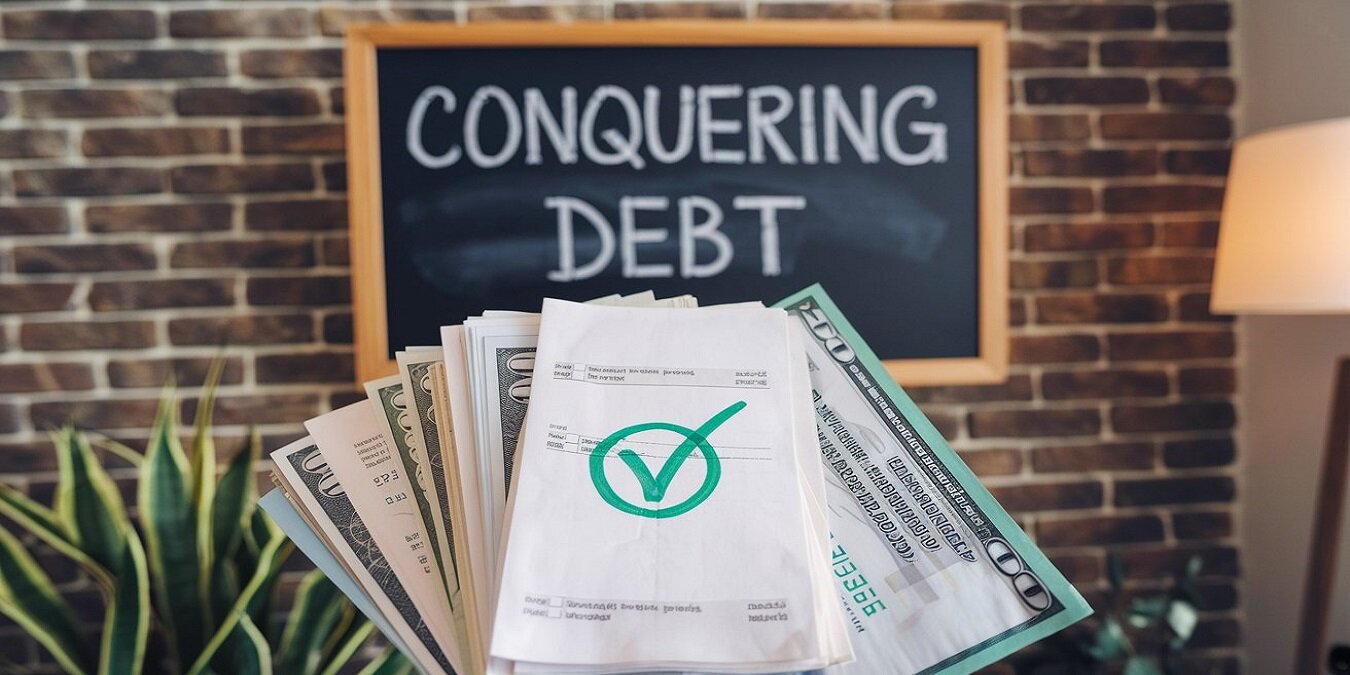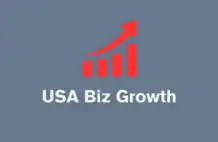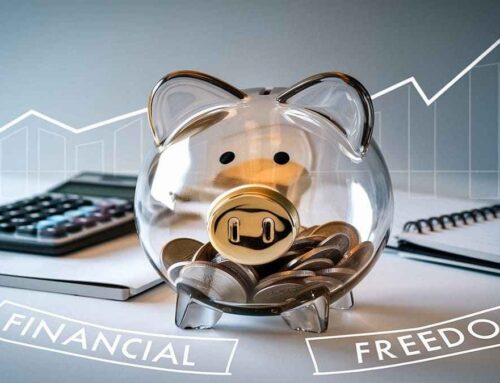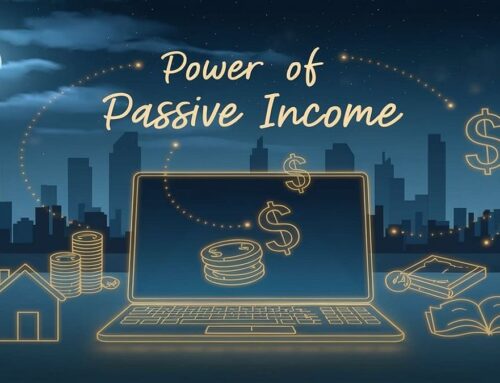
Conquering Debt
DEBT. It’s a word that can spark anxiety, stress and even shame. But what if I told you debt doesn’t have to control your life? What if there’s a clear path to freeing yourself from its grasp?
You’re not alone in this journey. Millions face the same struggle, but there’s good news: you can conquer your debt, step by step and ultimately achieve financial freedom.
Understanding Debt: Not All Debt is Bad
First things first: debt isn’t inherently bad. Surprised? It’s true. Some forms of debt, like a mortgage or student loan, can actually be beneficial when used wisely. These are often referred to as “Good Debt” because they help you build assets or increase your future earning potential.
However, not all debt is created equal. High-interest credit card debt or personal loans with unfavorable terms can quickly spiral out of control, leading to a cycle of stress and financial instability.
So how do you break free? It starts with understanding the kind of debt you’re dealing with and building a strategy tailored to your specific situation.
Step 1: Face the Numbers – Honestly
The first step in conquering debt is facing it head-on. I know, it’s uncomfortable. It’s easy to ignore those bills piling up or to avoid opening credit card statements. But the longer you wait, the harder it becomes.
Sit down with your financial statements, grab a pen and paper (or a spreadsheet) and list out every debt you owe. This includes the balance, interest rate and minimum payment for each. Don’t sugarcoat it. This exercise isn’t meant to make you feel bad – it’s about empowering yourself with the facts. Once you see everything clearly laid out, you’re in a stronger position to make decisions.
Step 2: Prioritize Your Debt
Now that you’ve mapped out your debt, it’s time to prioritize. There are two popular strategies when it comes to debt repayment: the Debt Snowball Method and the Debt Avalanche Method. Let’s break them down.
- Debt Snowball Method: You focus on paying off the smallest debt first, regardless of interest rate. Once that debt is cleared, you take what you were paying on it and apply it to the next smallest debt, creating a snowball effect. This method is great for building psychological momentum. Every small victory gives you a sense of accomplishment, which keeps you motivated.
- Debt Avalanche Method: With this approach, you tackle the debt with the highest interest rate first. This strategy saves you more money in the long run because you’re eliminating high-interest payments sooner. It’s mathematically sound, but it can be harder to stay motivated, especially if your largest debts will take a while to pay off.
Both methods work, so it’s up to you to choose the one that fits your mindset. Ask yourself, “Do I want quick wins to stay motivated or do I want to save the most money over time?”
Step 3: Create a Realistic Budget
Here’s where the real strategy begins: building a budget. I know, the word “Budget” might make you cringe, but stick with me. A budget isn’t about depriving yourself – it’s about giving every dollar a purpose.
Start by tracking your current spending. Are you shocked by how much goes to eating out or online shopping? Most people are. Once you know where your money is going, you can start reallocating funds toward your debt repayment. Cut back on unnecessary expenses, but make sure your budget is realistic. If it’s too restrictive, you’re more likely to give up. Think of it like a diet: you need balance.
Step 4: Emergency Fund First, Then Focus on Debt
Here’s a step that might feel counterintuitive: build a small emergency fund before aggressively paying off debt. Why? Life happens. Whether it’s a car repair or a medical bill, unexpected expenses are inevitable. Without an emergency fund, you’ll end up relying on credit cards, which only digs you deeper into debt.
Aim to save at least $1,000 as a starter emergency fund. Once that’s in place, you can shift your focus to debt repayment. The peace of mind that comes with having a small financial cushion is priceless.
Step 5: Negotiate with Creditors
Most people don’t realize they have the power to negotiate with creditors. Credit card companies and lenders want to get paid, so they’re often willing to work with you if you’re upfront about your situation. Call them. Explain your financial situation and ask for a lower interest rate, a payment plan or even a settlement offer. It doesn’t hurt to ask and the worst they can say is “No.”
If you’re feeling overwhelmed, consider working with a Credit Counseling Agency. These organizations can negotiate on your behalf and help you create a debt management plan.
Step 6: Increase Your Income
Cutting expenses is great, but there’s only so much you can trim from your budget. Increasing your income, even temporarily, can significantly speed up your debt repayment process. Side hustles, part-time gigs or freelance work can bring in extra cash that’s earmarked solely for paying off debt.
What skills do you have that others might pay for? Think about tutoring, pet sitting, freelance writing or selling items you no longer need. Even a small increase in income can make a big difference.
Step 7: Automate Your Payments
Debt repayment isn’t just about strategy – it’s about consistency. Automating your payments ensures you’re never late, avoiding additional fees and negative marks on your credit report. Set up automatic payments for at least the minimum balance on all your debts. If possible, automate extra payments toward your prioritized debt as well. This eliminates the temptation to spend money elsewhere.
Step 8: Celebrate Small Wins
Debt repayment is a marathon, not a sprint. It can be mentally exhausting, especially if your debt is significant. To stay motivated, celebrate small wins along the way. Paid off your first credit card? Treat yourself (responsibly, of course). Hit a savings milestone? Do something fun.
Rewarding yourself for progress keeps you focused and helps you stay positive throughout the journey.
Step 9: Avoid New Debt
This might sound obvious, but avoiding new debt is critical. As you start paying off what you owe, it’s tempting to fall back into old habits. Whether it’s opening a new credit card or financing a big purchase, avoid taking on new debt unless it’s absolutely necessary.
If you’ve been using credit cards for everyday expenses, switch to a cash or debit system until you’re in control. This way, you’re only spending money you already have, not borrowing from your future self.
Step 10: Understand Your Why
Why are you committed to conquering your debt? Is it to provide more security for your family? To feel a sense of freedom and control over your finances? Maybe you want to travel more or invest in your future.
Whatever your “Why” is, keep it front and center. When the going gets tough, remind yourself of your motivation. It’s not just about numbers on a page, it’s about the life you want to live.
The Psychological Impact of Debt
Debt isn’t just a financial burden – it’s an emotional one. Carrying significant debt can lead to stress, anxiety and even depression. It can impact your relationships, self-esteem and overall sense of well-being. Recognizing the psychological weight of debt is crucial. Don’t be afraid to seek emotional support, whether that’s talking to a trusted friend, therapist or support group.
Remember, you’re not alone in this. Millions of people face similar struggles and many have come out on the other side stronger. You can too.
Visualize Your Debt-Free Life
It’s easy to get bogged down in the day-to-day grind of paying off debt, but take a moment to imagine what your life will look like once you’re debt-free. What will you do with the money you were sending to creditors? Will you save for a home, invest in your retirement or take that long-awaited vacation?
Visualizing your debt-free future can serve as a powerful motivator. It reminds you that the sacrifices you’re making now will pay off in the long run.
When Debt Feels Overwhelming
Sometimes, despite your best efforts, debt can feel overwhelming. If you’re unable to make minimum payments or if you’re facing collection notices, it’s important to consider all your options.
Debt Consolidation or Bankruptcy are more extreme measures, but they may be necessary in certain situations. If you’re considering these routes, consult with a financial professional to understand the implications.
Financial Freedom: What Does It Mean for You?
Financial freedom looks different for everyone. For some, it means being able to cover monthly expenses without stress. For others, it’s about having enough saved to travel or invest in a business. No matter what your definition is, the path to financial freedom begins with eliminating debt.
Debt is like an anchor, holding you back from achieving your financial goals. But with a clear strategy, determination and a long-term mindset, you can lift that anchor and sail toward a future of financial freedom.
Conclusion: Your Debt-Free Journey Starts Here
Debt can feel overwhelming, but it doesn’t have to define your life. By acknowledging the problem and taking action, you’re well on your way to financial freedom. Stay focused, be consistent and don’t let setbacks deter you.
Remember, this isn’t just about numbers; it’s about gaining control. A strategic approach to debt repayment, prioritizing, budgeting and staying consistent, can transform your financial future. By making conscious choices and aligning your habits with your goals, you can break free from debt and build a life where you’re in control.















I truly wanted to type a message in order to express gratitude to you for some of the magnificent tips and tricks you are showing on this site. My extensive internet lookup has at the end been honored with awesome insight to go over with my family members. I would admit that we site visitors are really fortunate to dwell in a useful site with very many special people with very helpful methods. I feel truly lucky to have used the web page and look forward to plenty of more exciting minutes reading here. Thanks a lot once again for everything.
I like the helpful information you provide on your articles. I’ll bookmark your blog and check once more right here regularly. I am relatively certain I’ll be informed many new stuff right here! Good luck for the next!
We stumbled over here by a different website and thought I might check things out. I like what I see so now i am following you. Look forward to finding out about your web page yet again.
As a Newbie, I am always browsing online for articles that can aid me. Thank you
Hi, Neat post. There is a problem with your site in internet explorer, would test this… IE still is the market leader and a large portion of people will miss your wonderful writing due to this problem.
I like this blog so much, saved to favorites. “I don’t care what is written about me so long as it isn’t true.” by Dorothy Parker.
I really like your writing style, good information, thankyou for posting : D.
Very interesting points you have remarked, thankyou for posting.
It is in reality a great and helpful piece of information. I’m happy that you simply shared this useful info with us. Please stay us up to date like this. Thanks for sharing.
I am now not positive the place you’re getting your info, but good topic. I must spend a while learning more or working out more. Thank you for magnificent information I used to be in search of this information for my mission.
I love your blog.. very nice colors theme. Thanks..
I think you have noted some very interesting details, appreciate it for the post.